When I first moved to Atlanta, I always took friends who visited me to see the World of Coca-Cola Museum. Located at Underground Atlanta, tickets cost only $2.50. In 2007, World of Coca-Cola built a bigger museum complex at Centennial Olympic Park and ticket prices increased.
Instead of the previous linear museum layout, the new site featured a hub and spoke circulation pattern. I took Thing 1 and Thing 2 soon after the relocation but for whatever reason, I didn’t like the new museum. Fast forward 15 years and I decided to give it another chance. This time, I really loved the museum and once again, think it’s one of the must-see museums in Atlanta.
Centennial Olympic Park
The center of activity during the 1996 Summer Olympic Games, Centennial Olympic Park, boasts 22 acres of green space and a splash fountain. In preparation for the games, Coca-Cola purchased 20 acres adjacent to the park for Coca-Cola City. After the games, Coca-Cola donated some of the land to the Georgia Aquarium (which opened in 2005), built its own 92,000-square-foot complex (which opened in 2007), and later donated 2.5 acres to the National Center for Civil and Human Rights (which opened in 2014). Collectively known as Pemberton Place, in honor of Coca-Cola’s inventor, the area serves as a central area for tourist attractions – with large parking decks to accommodate visitors.
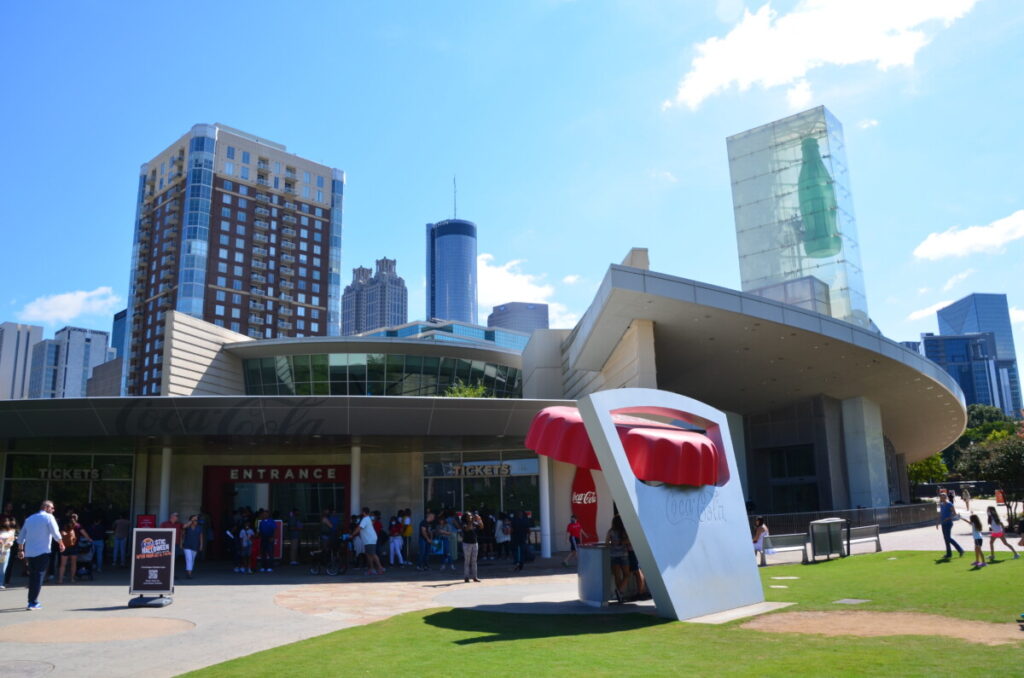
First Floor Exhibits
Visitors purchase tickets at a kiosk outside the museum and before entering the building, pose for a photo that can be purchased later. Once inside, guests stand in a lobby area with windows overlooking Pemberton Place until the doors to “The Loft” open. A clock above the door counts down to the next showtime.
The Loft
The doors open and the entire group walks down a ramp into a room filled with an overabundance of Coca-Cola signs. Other memorabilia includes a Coke machine, ice chest, bottle opener, and advertisements.
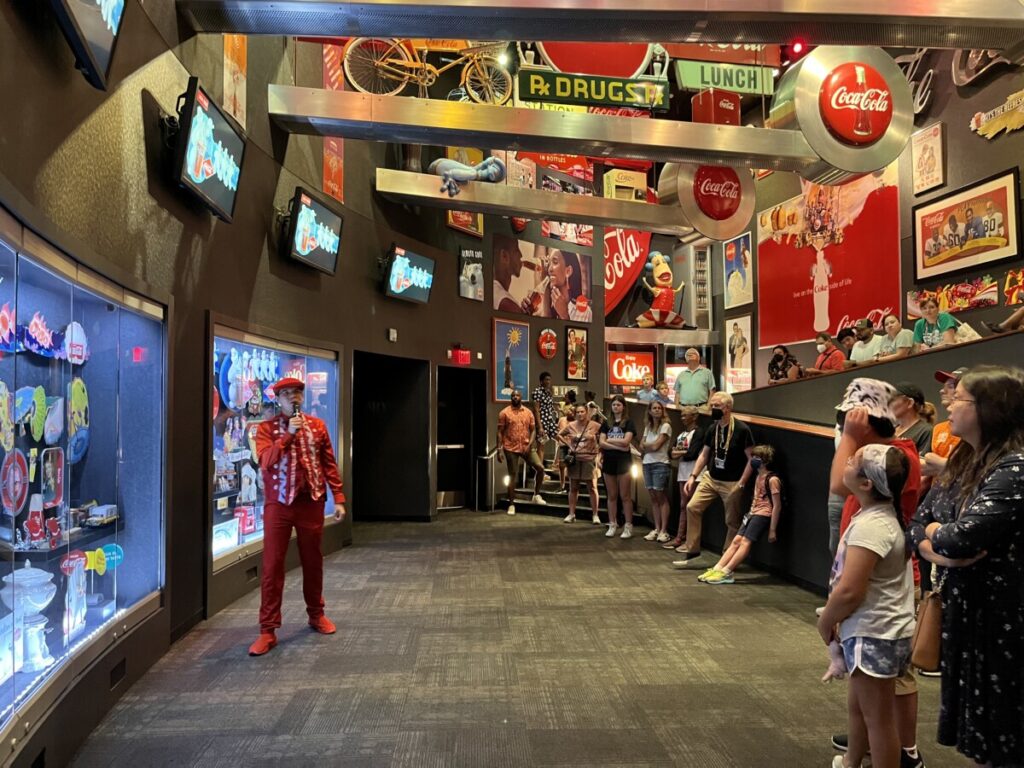
A man decked in all red introduces himself as our Coca-Cola ambassador. He points to the glass case behind him filled with Coca-Cola-themed serving trays, beach pants, and the oldest item – a white urn from the late 1890s which held the syrup. After explaining a brief history of Coca-Cola, he sends us to a large two-story atrium area to explore the rest of the museum on our own. Several tasting tables are set up and we sample beverages.
Vault of the Secret Formula
When I saw the vault over a decade ago, I felt it was a cheesy exhibit. In my early career, I worked for SunTrust Bank. Because SunTrust (now called Truist, but at the time called Trust Company) helped the young company go public in 1919, they at one time owned 48 million shares of Coca-Cola stock and secured the secret formula in the vault – about 23 floors down from my office.
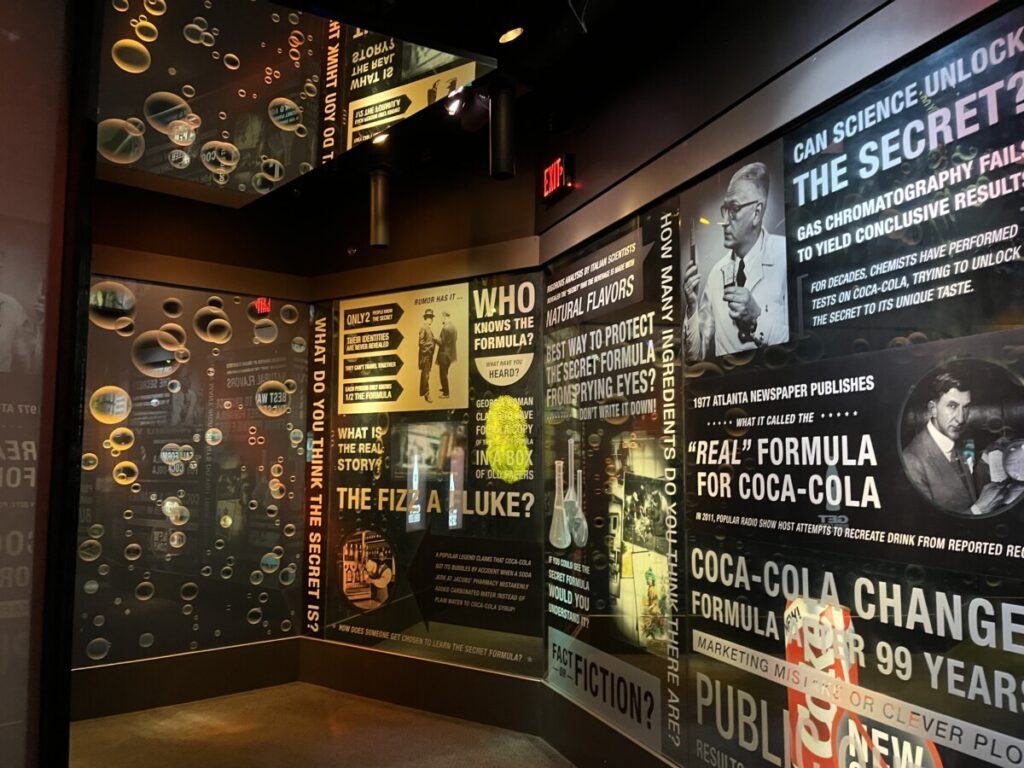
I found the vault experience much better this time with several exhibits detailing how John S. Pemberton created the formula including some of his handwritten notes. The exhibit highlights myths, knock-offs of Coca-Cola, and even the ill-fated formula change to New Coke in 1985. One interactive exhibit allows visitors to adjust levels of sharp, sweet, tingly, tart, etc. for a “perfectly balanced taste.” To enter the vault, a booming voice narrates our journey into a room with large screens simulating being inside a large vat of Coca-Cola. As the music increases, the doors slide open to show a large silver vault. Ok – I still think the actual vault is a silly marketing ploy, but I do like the exhibits leading up to it.
Milestones of Refreshment
One of my favorite exhibits, Milestones of Refreshment details the brand’s history through the years. Starting with a sculpture of John Pemberton mixing the famous syrup, the exhibit recreates a soda shop where soda jerks would mix the syrup with carbonated water to serve the fountain drink.
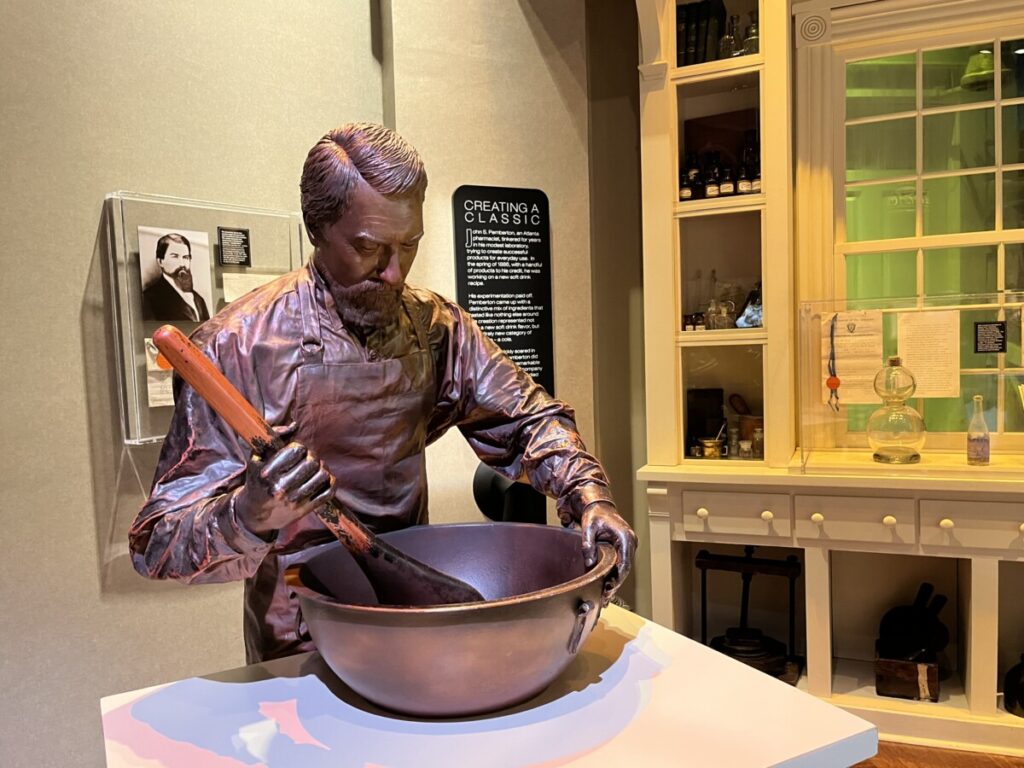
A timeline shows that Pemberton sold the Coca-Cola rights to pharmacist Asa Candler who formed the Coca-Cola Company in 1892. A born marketer, Candler registered the trademark and expanded the brand to the entire US by 1895. With a huge advertising campaign, sales hit one million in 1904.
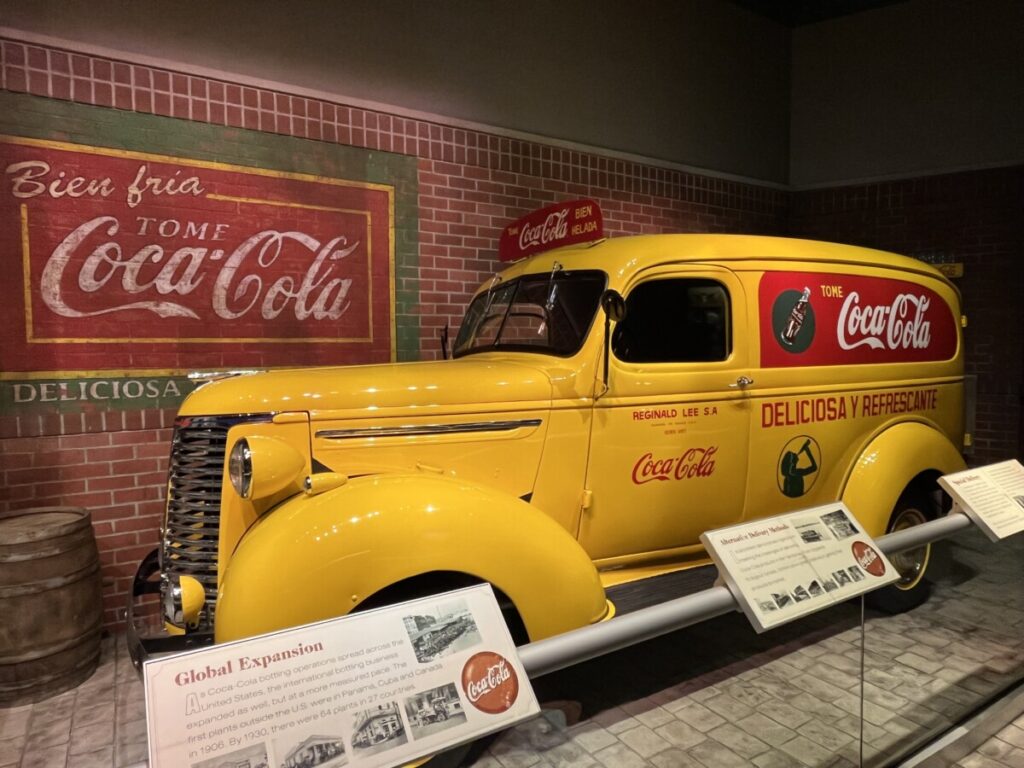
Over the next decade, the company opened bottling operations in Cuba, Canada, and Panama and Asa Candler retired in 1916. Just as the company entered the European market, Ernest Woodruff and others purchased the company in a public offering for $25 million in 1919.

The exhibit highlights early Coca-Cola calendars, trays, and other memorabilia. Slogans from advertising campaigns reflect trends in fashion and furnishings. If you don’t think you drink Coca-Cola products, think again as a wall shows all the Coca-Cola beverages today. Dasani Water, Schweppes Club Soda, and Minute Maid Lemonade are all part of the Coca-Cola empire today.
Bottle Works
To expand into various markets, regional operators bottled and distributed Coca-Cola. Candler didn’t see the value in it and sold the bottling rights to independent operators for $1. He was wrong and many local bottlers made a fortune. Since 1980, Coca-Cola has aquired many local bottlers.
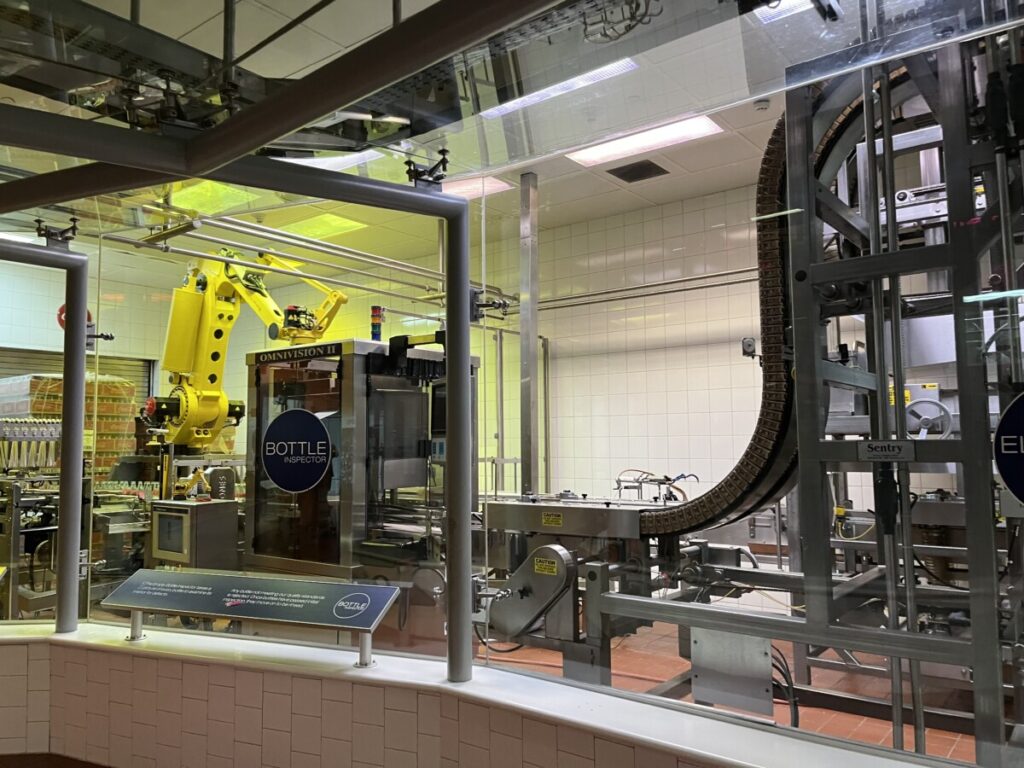
A walk-through area shows the bottling of Coca-Cola with heavy machinery behind glass windows.
Second Floor
Moving up to the second floor, we took in the huge atrium area. All around, large iconic Coca-Cola bottles, painted in folk art designs adorned the area. So how did the distinctive bottle design come about?
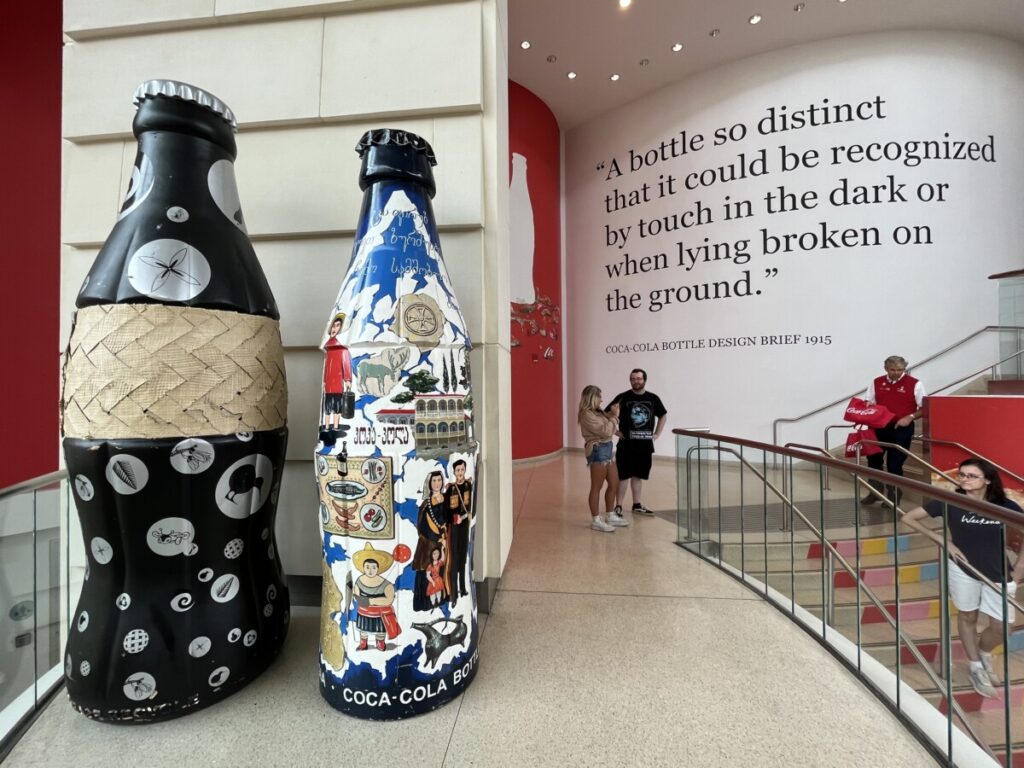
With so many independent bottlers of Coca-Cola, the bottle at first didn’t have one uniform design or color. Even after the company required bottlers to emboss the logo into the glass and place a diamond-shaped label on each bottle, competitors such as Koke and Toka-Cola easily copied it. In frustration, Coca-Cola and the bottlers held a competition between glass makers and voted on the iconic, green-countoured-shaped bottle in 1916. In a rare move, the US Patent Office trademarked the bottle in 1961 as it was so identified with the Coca-Cola brand. l
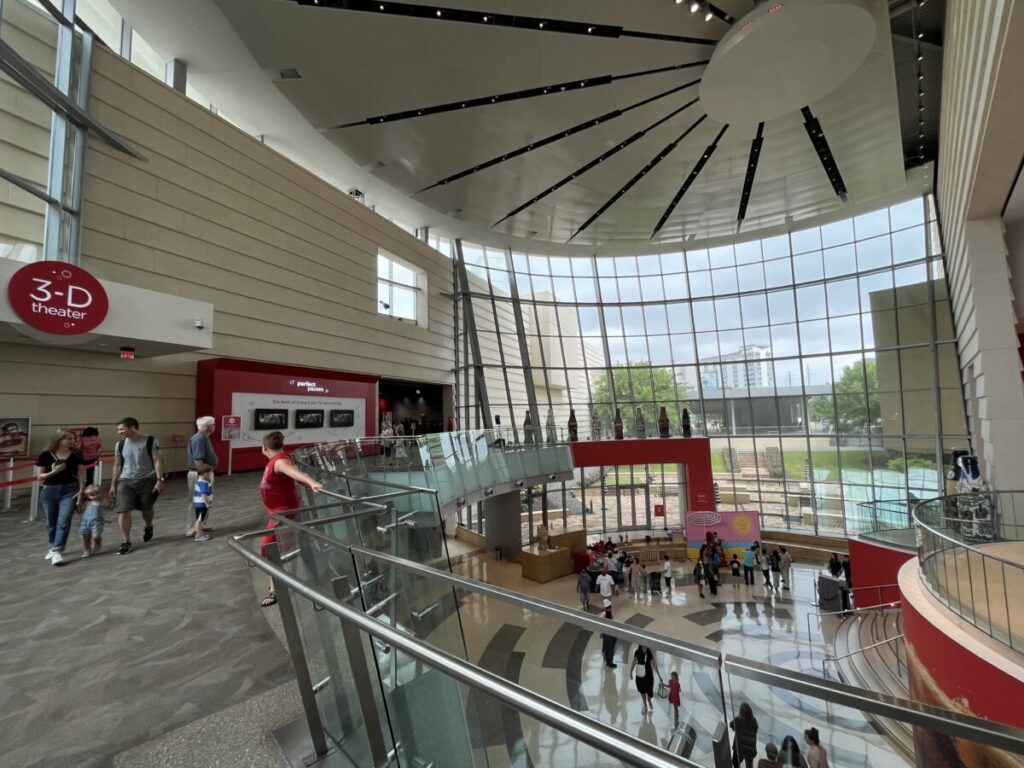
The 3D Movie, “In Search of the Secret Formula” plays in the theatre. It’s a cute movie that lasts about 10 minutes. The Coca-Cola Polar Bear was also on hand for pictures.
Pop Culture
Featuring all things Coca-Cola including a tie, lamp, and more, the Pop Culture gallery was my least favorite exhibit. I was getting a bit tired of everything with the Coca-Cola label. However, I did enjoy hearing the “I’d Like to Buy the World a Coke” song from the popular Hilltop ad of 1971 and seeing Max Headroom from the mid-1980s.

Since our visit this summer, I’ve heard World of Coca-Cola has added two new exhibits to the Pop Culture section. The first is a “Magic Mural” which is a collaboration of five female illustrators. The second features the “Ghost Signs” of Andy Thompson and his granddaughter. Ghost signs are the weathered Coca-Cola paintings found on the side of buildings, especially in the rural South.
Scent Discovery
One of the newest exhibits is Scent Discovery which highlights how important smell relates to taste. We gathered around a large table with separate scent stations. Squeezing the aromatic diffuser from the bottle, the ambassador asked us to identify the scent.
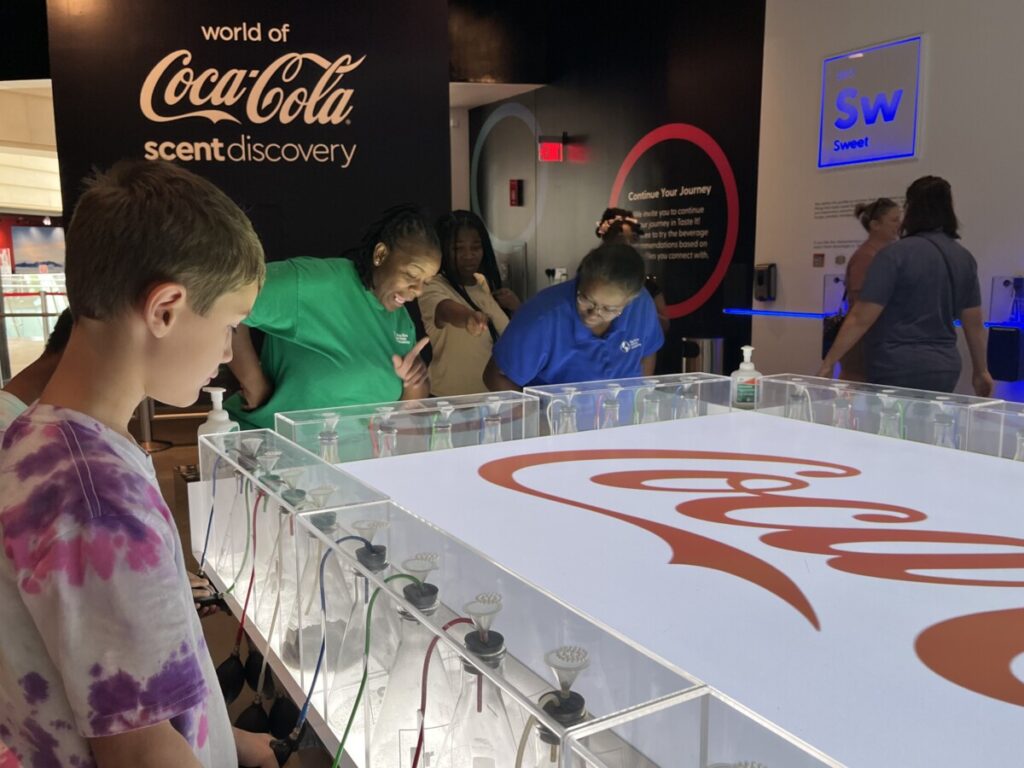
Our only clues were that it was either fruity, spicy, or sweet – the three flavor profiles most found in Coca-Cola products. On the walls, there were more scents to guess, as well as coffee beans to clear the olfactory palette.
Taste It!
Everybody’s favorite activity at World of Coca-Cola is the Taste-It gallery. Featuring over 30 Coca-Cola beverages around the world, we sampled some we liked (Fanta Pineapple from Greece) and some we didn’t like (Beverly from Italy).
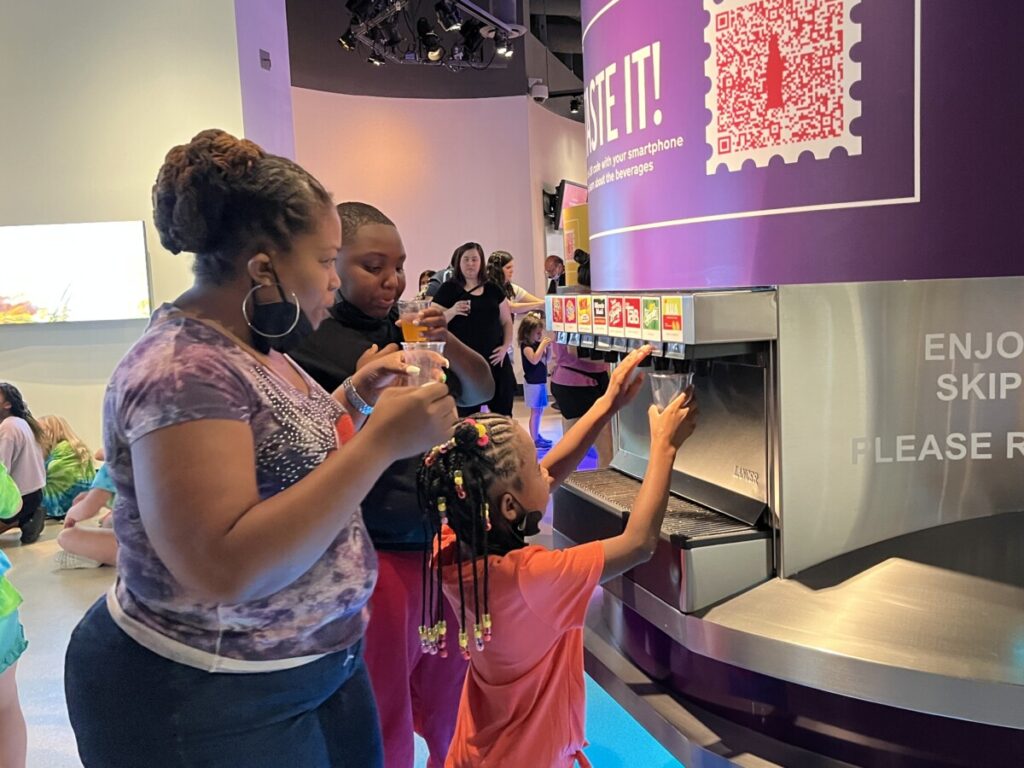
At the far end, we entered an area with good old-fashioned selections of Coca-Cola beverages in the US including Cherry Coke, Coke Zero, and Diet Coke. Freestyle touch-screen machines along the wall allowed guests to create their own Coca-Cola beverage from over 150 choices.
Gift Shop
Of course, Coca-Cola is going to market all its wares including the iconic bottle. The gift shop provided a feast for the eyes with bold colors of apparel, key chains, beach towels, purses, and more.
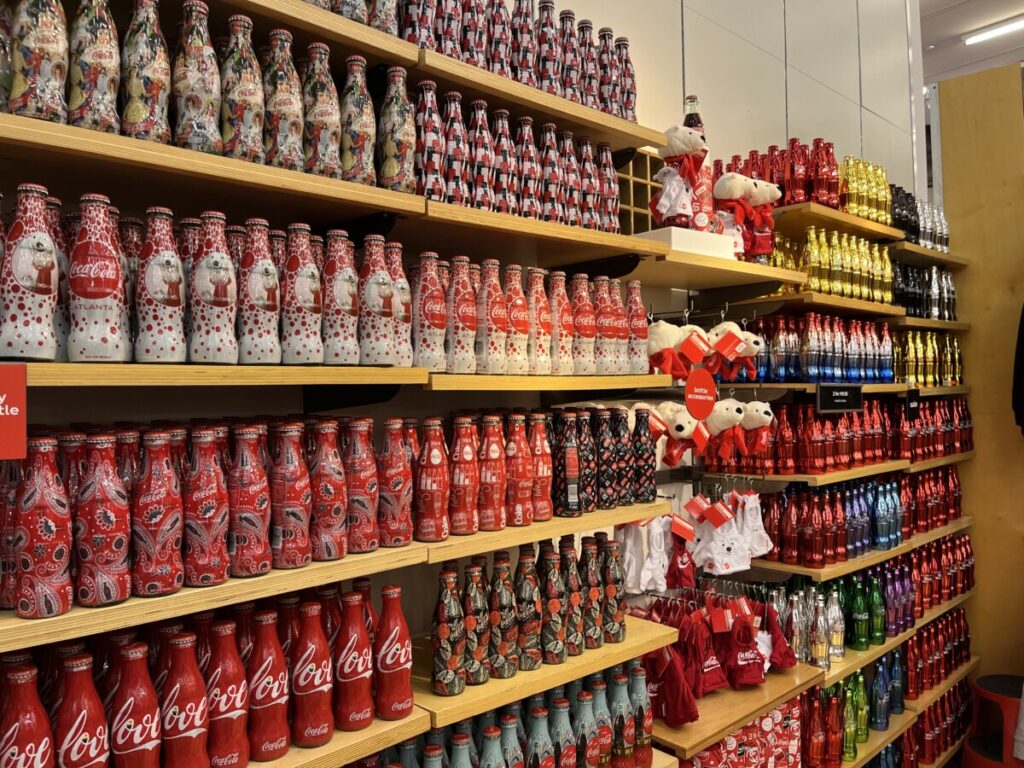
Conclusion
I’m impressed with the World of Coca-ColaMuseum. I felt for about $20.00 per ticket, we had a fun experience lasting two hours. The Scent Discovery was a welcome addition to the museum and I’m glad the Taste It exhibit is back after Covid restrictions.
For more information about World of Coca-Cola, click the website here.
